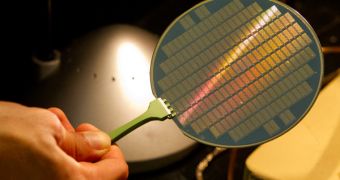Carbon nanotubes are a semiconductor material with the potential to lead the world into an age of faster electronics devices, and Standford engineers have finally managed to use them in a computer.
There have been attempts to create working systems out of carbon nanotubes for many years, but this is the first actual success. Stanford professors Subhasish Mitra and H.-S. Philip Wong are the ones at the head of the project.
Carbon nanotubes (CNTs) are long chains of carbon atoms that very efficiently conduct and control electricity, in spite of being so thin that thousands of CNTs could fit side by side in a human hair. They also need very, very little energy to be switched off.
Indeed, the only issue with them is represented by some inherent imperfections. For one, CNTs do not grow in neat parallel lines most of the time, something chipmakers rely on.
Second, a fraction of grown CNTs can behave like metallic wires that always conduct electricity, instead of acting like proper semiconductors that can be switched off.
"We needed a way to design circuits without having to look for imperfections or even know where they were," Mitra said.
Indeed, researchers may have devised a way to grow CNTs in neat parallel lines, but the error rate is of 0.5%, still significant when billions of nanotubes are in a single chip (processing errors ahoy).
So, eliminating the wire-like or metallic nanotubes was essential, so the team switched off all good CNTs and pumped the semiconductor with electricity, vaporizing the wires through sheer overheating. Only carbon dioxide was left, along with the desired nanotubes of course.
The misaligned CNTs were trickier. It took the research team creating an algorithm, a strong one too, that maps out a circuit layout that is guaranteed to work whether CNTs are askew or not.
"This 'imperfections-immune design' [technique] makes this discovery truly exemplary," said Sankar Basu, a program director at the National Science Foundation.
In the end, the scientists succeeded in setting up a computer with 178 transistors (they used the university's chip-making facilities rather than an industrial fabrication process, hence the small number). Counting and number sorting were performed under a basic operating system that allows it to swap between these processes.
It will take years for anything to come of this, but at least the worst issues have been overcome, for now.
"CNTs could take us at least an order of magnitude in performance beyond where you can project silicon could take us," Wong said.

 14 DAY TRIAL //
14 DAY TRIAL //